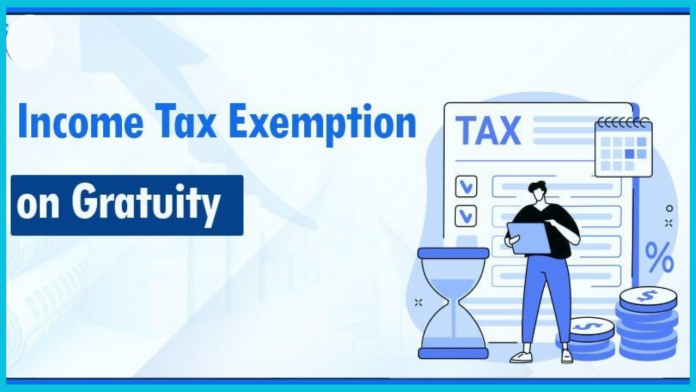
Gratuity tax exemption limit: The Union Cabinet has increased the tax free limit of gratuity from Rs 20 lakh to Rs 25 lakh. Now there will be no tax liability on gratuity of this amount.
Gratuity tax exemption limit: The government has made a major change in the limit of gratuity received by employees. The Union Cabinet has increased the tax free limit of gratuity from Rs 20 lakh to Rs 25 lakh. Now there will be no tax liability on gratuity of this amount. This gift has come at a time when employees are continuously protesting for their rights.
Till now the limit of tax free gratuity was Rs 20 lakh. Let us tell you, in the year 2019, the government had increased the limit of tax free gratuity from Rs 10 lakh to Rs 20 lakh. But, how will you know how much gratuity is being made on your salary and what amount you will be entitled to.
How is gratuity received?
A service class employee gets gratuity for 5 years of service. Under the Payment of Gratuity Act, 1972, employees of a company with more than 10 employees are entitled to gratuity. However, this may change. In the new formula, the benefit of gratuity can be given for 1 year instead of 5 years. The government is working on this. It is possible that there may be a decision on this in the New Wage Code. If this happens, it will benefit crores of private and government sector employees.
When is Gratuity received?
Gratuity is the amount which is given to the employee by the organization or employer. It is mandatory for the employee to work with the employer for at least 5 years. Usually this amount is given when an employee leaves the job or he retires. Even in the event of death of an employee due to any reason or his leaving the job due to an accident, he or his nominee (Gratuity nominee) gets the amount of gratuity.
What is the eligibility for Gratuity?
According to the rules of Gratuity Payment Act 1972, the maximum amount of gratuity paid can be up to Rs 20 lakh. For gratuity, it is mandatory for the employee to work in the same company for at least 5 years.
In case of employment for less time than this, the employee is not eligible for gratuity. Gratuity is not paid even if you leave the job within 4 years and 11 months. However, this rule does not apply in case the employee leaves the job due to sudden death or accident.
Gratuity Payment Act 1972
- Gratuity Payment Act’ was enacted in the year 1972 with the aim of protecting the interests of employees.
- The law covers employees of all those institutions working in mining areas, factories, oil fields, forest areas, private companies and ports, where 10 or more employees work.
- Gratuity and provident fund are completely different.
- The entire amount of gratuity is given by the company (employer). At the same time, the employee also contributes 12 percent to the provident fund.
Which institutions come under the purview of the Act?
Any company, factory, institution where 10 or more employees have worked on any one day in the last 12 months will come under the Gratuity Payment Act. Once the company or institution comes under the purview of the Act, it will have to remain within its purview. Even if the number of employees in a company is less than 10, it will still remain within the purview of the Act.
Gratuity is decided in two categories
In the Gratuity Payment Act 1972, to decide the formula for the amount of gratuity to be received by the employees, employees have been divided into two categories. The first category includes those employees who come under the purview of this Act, while the second category includes those employees who are outside the Act. Both types of employees working in private and government sectors are covered in these two categories.
Category 1-
Those employees who come under the purview of Gratuity Payment Act 1972.
Category 2-
Those employees who do not come under the purview of Gratuity Payment Act 1972.
The formula to determine the amount of gratuity (for employees covered under the Act) is
last salary x length of service x 15/26.
Last salary-
Basic salary + dearness allowance + commission on sales (if any). In this formula, considering 26 working days in a month, the employee is paid by taking an average of 15 days.
length of employment-
In the last year of employment, the employment for more than 6 months will be considered as a full year, for example, in case of employment for 6 years and 8 months, it will be considered as 7 years.
Example–
Suppose someone worked in a company for 6 years and 8 months. At the time of leaving the job, his basic salary was Rs 15,000 per month. In such a situation, according to the formula, their gratuity amount will be calculated like this.
15000x7x15/26= Rs 60,577
Gratuity formula (for employees not covered under the Act)
Last salary x period of service x 15/30
Last salary-
Basic salary + dearness allowance + commission on sales (if any). In the formula, considering 30 working days in a month, the employee is paid by taking an average of 15 days.
Length of employment-
For such employees, a period of not less than 12 months is not added to the last year of employment. For example, if an employee has worked for 6 years and 8 months, then it will be considered only for 6 years.















